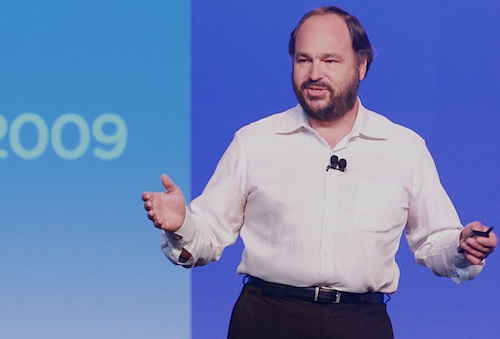
Conspicuous for its consumer ethic, the computer industry has always embraced the belief that “more is best” — more machines, more processors, more power.
Turning that on its head is Paul Maritz. Zimbabwean-born and SA-educated, Maritz is spearheading a move to decrease the number of computers an organisation uses by making existing resources more efficient. At the same time he has companies like Microsoft firmly in his sights.
Maritz is a heavy-hitter in the IT world and the CEO of VMware, a company that produces “virtualisation” software. Like Google’s ubiquitous search engine and online desktop applications, VMware’s software is a significant threat to Microsoft, which appears to be caught almost in a pincer movement between the two companies.
Here’s why.
Computers essentially work in a hierarchical chain made up of three principal components — hardware, operating system (OS) software and software applications.
Hardware is the physical machinery that makes up a server, desktop or mobile computer and is basically dead metal and plastic without an operating system. The OS is the software that brings the hardware to life and allows it to process instructions from the useful stuff, the applications. These are the programs that include everyday desktop tools like word processors, spreadsheets, e-mail, Web browsers and schedulers.
Historically Microsoft has retained the money-spinning lion’s share of the operating system software market through Windows and desktop applications in the form of its Office suite. It’s a tidy business that has propelled the company to dominance in the past three decades.
It’s been a long time coming, but the company now looks like it is facing its most significant competition since its early days — and on two fronts.
Google is threatening its desktop business by capturing a growing share of Web space and making inroads into the applications market by offering its own office software, Google Docs, for free online.
VMware, meanwhile, is accelerating its movement into the OS space with its virtualisation software — programs that may eventually supplant OSes altogether. Classed somewhere between OS and desktop software, virtualisation software is predicted by analysts to become the de facto operating system on most business computer infrastructure in time.
Already, 970 of the world’s 1 000 largest companies use virtualisation technology.
Maritz is in a unique position to fire the broadside on OSes — until 2000, when he retired from Microsoft, he was third in command at the company, behind cofounder Bill Gates and the now-CEO Steve Ballmer.
He worked at the company through its strongest growth years. His responsibilities included overseeing the operational development of the company’s desktop, server and Internet software. Prior to that, he worked at chip-maker, Intel.
On the phone, his voice is measured and he has a curious blend of SA and American accents. Educated in SA, Maritz is a Hilton College old boy. He graduated from the University of Natal and the University of Cape Town with degrees in computer science.
In SA to drum up business and visit family, Maritz says a fundamental change in the way we use computers is on the cards. And it begins with doing more with what we already have.
In the run-up to the Y2K date change, companies spent too much on upgrading their networks and systems. Many used the opportunity to standardise on operating systems and applications, but as the Internet took hold and organisations became more electronically interconnected, it became a headache to get disparate systems to “talk” to one another.
Software like VMware is operating system-independent and frees up underutilised hardware. “Once companies have undergone the virtualisation process, they’re in a position to do more ambitious things with their computer hardware and software,” says Maritz.
“It’s not uncommon for a company with 1 000 servers to be able to collapse them back to 300 or so. By getting rid of about 70% of this hardware, companies can free up the resources previously needed to maintain, power and accommodate them.”
Once operational improvements are achieved, virtualisation software can be used to take over functions traditionally associated with operating systems. The implications of this have not been lost on Microsoft, which has instituted virtualisation initiatives of its own as it simultaneously works to stave off threats to its business from Google.
Whatever the outcome, what’s certain is that big changes are coming to the computer industry. — Greg Gordon, TechCentral
Subscribe to our free daily newsletter




